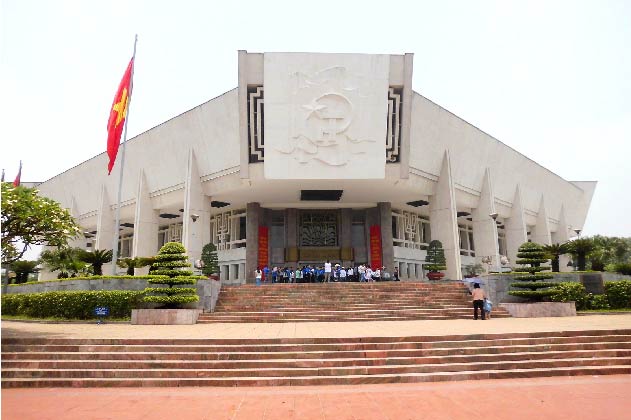President Ho Chi Minh was a Vietnamese hero of the national liberation movement and a great man of culture. He dedicated his entire life to his country, contributing to the united struggle of people for peace and independence, for the development of democracy and the whole society.
Ho Chi Minh Museum contains more than 120,000 objects,documents and films about President Ho Chi Minh’s former life and revolutionary career. Those works are the reflection of Ho Chi Minh’s thought and moral qualities, remaining as an encouragement to the succeeding generation to follow his path.
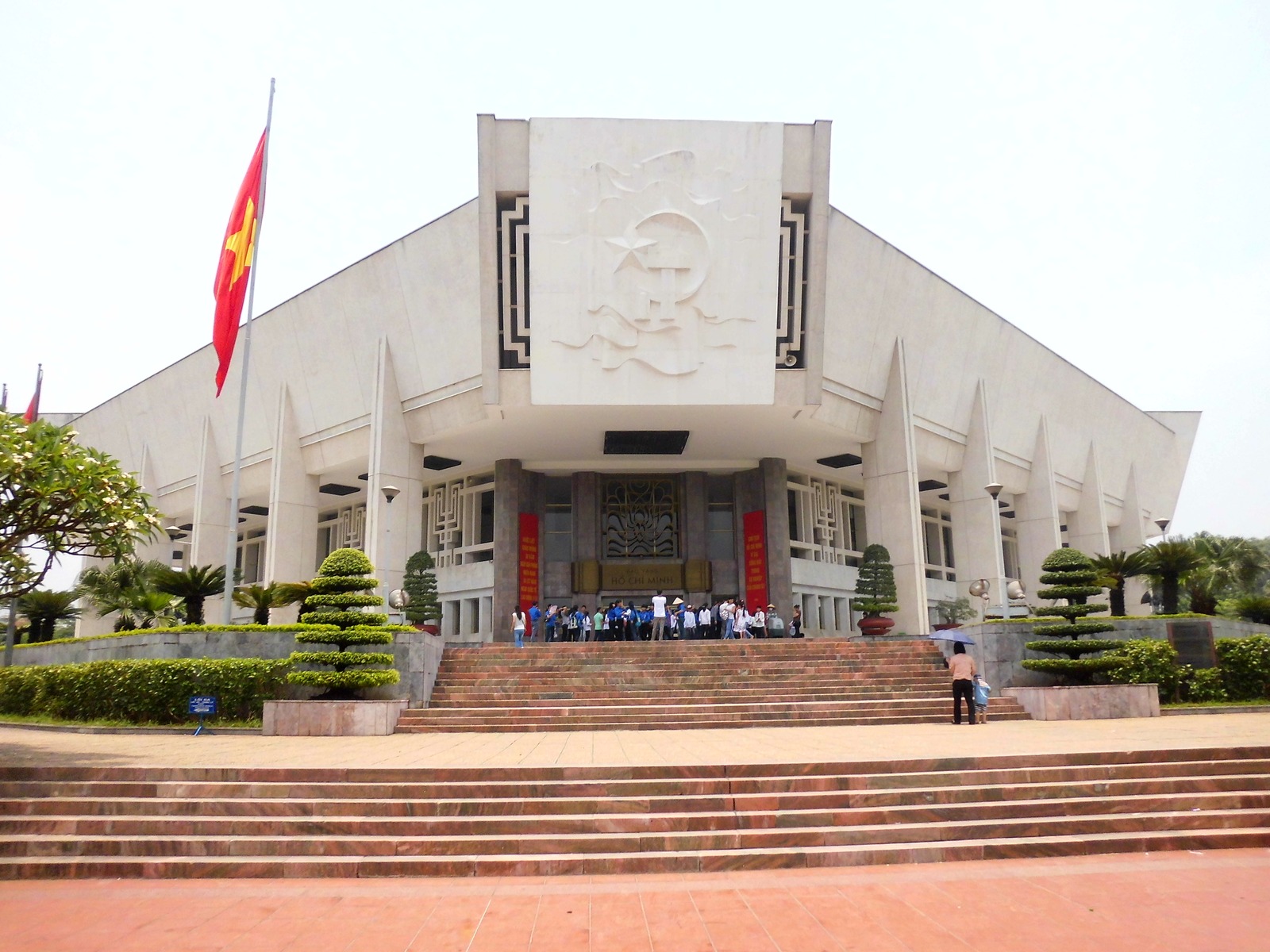
History
President Ho Chi Minh passed away on September 2, 1969. In compliance with the Vietnamese people’s expectation, the government proposed the project of building the Ho Chi Minh Museum at the same time with Ho Chi Minh Museum.
On November 25, 1970, the Board in charge of the Ho Chi Minh Museum construction was established. All materials, documents, works related to the life and career of the great president were collected and kept in the maintenance process.
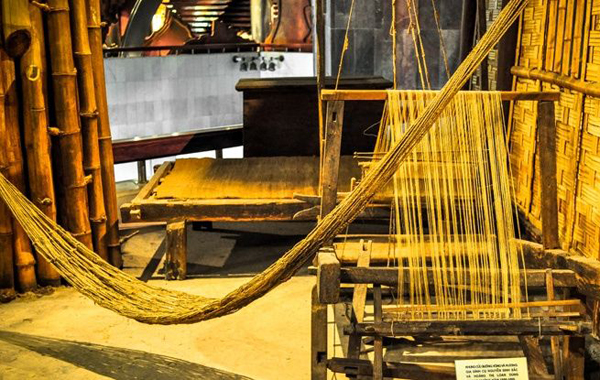
Due to the hardship of wars, bombing and natural disaster, as well as a dramatical change in social development and difficulties in collecting objects remained from wartime, it took 20 years for the Ho Chi Minh Museum to be open on May 19th, 1990. This was also held on the occasion of the 100th birthday of the President.
Popular Sections in the Museum
The Museum layout is divided into eight themes, regarding eight major periods in the history of Ho Chi Minh.
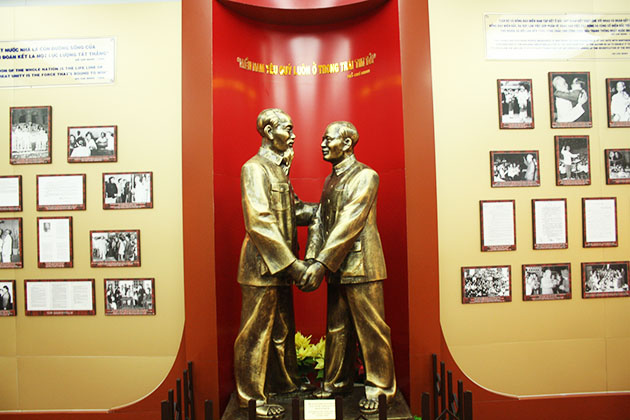
First Theme
The first theme portrays the childhood and youth of President Ho Chi Minh, from 1890 to 1911. President Ho was born in a family honoured patriotic value, so his initial revolutionary began very early.
The theme is demonstrated with a number of documentary photographs showing the patriotic activities of his family members before him. That time was the period of the movement of Vietnamese people’s struggles against foreign aggression in the late 19th century and early 20th century. The era of dramatic social changes had led to President Ho Chi Minh’s absorption of the national tradition of patriotism. This root of thought had enabled him to enter the right path of national salvation.
Second Theme
The second theme reflects the period that President Ho Chi Minh comprehended and set Marxism – Leninism as the path to the future great revolution of Vietnam (1911-1920)
On June 5, 1911, Nguyen Tat Thanh set foot on a journey abroad in the ship Admiral Latouche Treville to French. He took the name Nguyen Van Ba and became a kitchen help on the ship – a temporary disguise for his actual mission of national salvation. Having a far broader vision than the former revolution leaders, Nguyen Tat Thanh realised that to save his own homeland, he had to travel to other countries of more developed civilisation, to gain a comprehensive look at the world affair at that time.
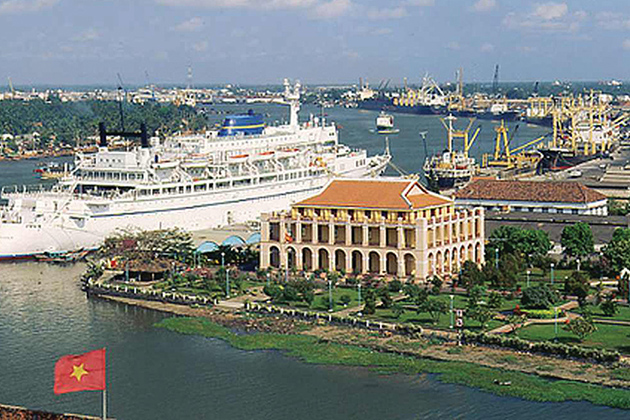
During the period between 1911 and 1920, Nguyen Tat Thanh had been to many countries across several continents, seeking the right thought and right path. Finally, in July 1920, Nguyen Ai Quoc came across the Thesis of V.I.Lenin on the National and Colonial Question in the L’Humenité newspaper of French. He was selected as the only representative from Indochina to attend the 18th Congress of the French Socialist Party in Tours.
The ideology of Marx and Lenin has been the destined path for Vietnam’s national independence movement ever since.
Third Theme
The third theme records the time when President Ho Chi Minh faced with the challenge of defending and applying Lenin’s theory in the context of Vietnam’s Independence Movement (1920-1924)
The collection shows a rough picture of Nguyen Ai Quoc’s initial activities on bringing Marxism and Leninism to Vietnam. In 1921, he founded the Intercolonial Union and published the “Le Paria”. Nguyen Ai Quoc was the heart of the periodical – its chairman, writer, editor and cashier. Via Le Paria, he called for the union of world people on supporting the colonial revolution.
In 1924, he returned to Asia.
Fourth Theme
The fourth theme is the record of President Ho Chi Minh’s founding the political party of the working class in Vietnam (1924-1930)
Nguyen Ai Quoc began his mission at training and educating the potential revolutionary communists. The first generation of future Vietnamese communist leaders had been formed.
Fifth Theme
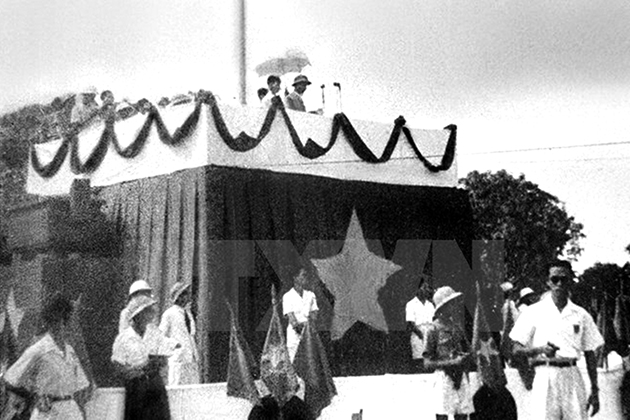
This theme focuses on the President Ho Chi Minh’s leadership of the Communist Party of Vietnam, which came to the great victory in August 1945, establishing the Democratic Republic of VietNam.
This period was one of the most severe yet victorious time in Vietnam’s history. On September 2, 1945, at the Ba Dinh Square, Hanoi, President Ho Chi Minh read the Declaration of Independence. History has marked the birth of the Democratic Republic of Vietnam.
Sixth Theme
The theme contains collections of President Ho Chi Minh as the revolutionary administration and Vietnam’s resistance war against French colonialists (1946-1954)
After 1945, President Ho Chi Minh led the entire nation in the great mission to build and defend their newly established administration. This was a time of continuous wars, struggle and hardship.
Seventh Theme
The seventh theme focuses on the socialist revolution in the north, and the struggle to reunify the country (1954-1969)
This section describes activities of President Ho Chi Minh and his Party to defend socialism in the North and began democratic revolution in the South. Two missions were carried out simultaneously, with the aim of achieving national reunification.
Unfortunately, on September 2, 1969, due to health problem, President Ho Chi Minh passed away, leaving the great liberation movement in the most severe peak. The Vietnamese people mourn his death to this day.
Eighth Theme
The section is a grand portrayal of the continuous success of Vietnamese armies in defeating the US Imperialists and their struggle, survival and victories in countless battles and bombings. This period marked some of the most well-known victories against imperialism, one of them was the historic Ho Chi Minh Campaign in 1975.
Highlights of the Museum
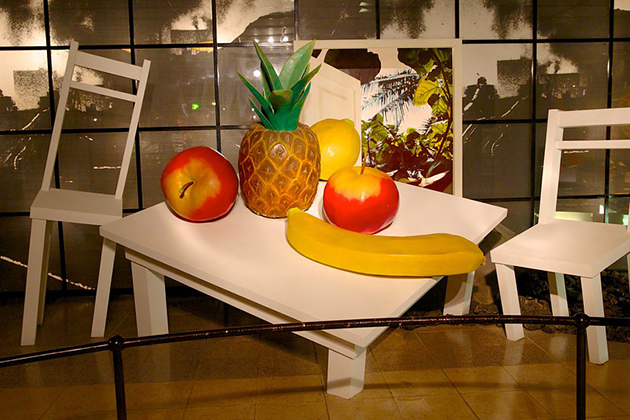
Ho Chi Minh Museum is a place of significant historical value and is definitely a must-visiting destination for any tourist to Hanoi city. Below are the highlights of the relic that beckons visitors:
- The Museum contains more than 120,000 documents, objects and films. This is where visitors can get the most comprehensive picture of the life of President Ho Chi Minh.
-The collections are divided into distinct sections with clear structure. Each collection is a testimony to a historical period of wars, guns and bombs, battles and survival. The story provided with each period is captivating and extraordinary with vivid evidence.
-The Museum is but one section in the Ho Chi Minh Complex, which visitors can spend their whole day to explore. The Ba Dinh Square, the Ho Chi Minh Museum, the Presidential Palace, Ho Chi Minh Residence and the One Pillar Pagoda are other mesmerizing sections in the Ho Chi Minh Complex. All places are well-preserved and guarded with meticulous care, where the legends of the proud leader are ready to be told by the willing tour guides.
- Right in front of the Ho Chi Minh Museum’s entrance is a local market. After a visit back in time, tourist can change the atmosphere by heading to the market. There is plenty of specialties, from Pho (Vietnamese noodles) to Che (Vietnamese pudding) to Banh Mi (Vietnamese bread).
How to get there
Ho Chi Minh Museum is located inside the Ho Chi Minh Complex, on the Hung Vuong Street, Ba Dinh District, Hanoi. The Complex is accessible by both private and public transportation. For private transportation users, parking is available at the entrance gate of the Ho Chi Minh Museum.
Buses number 09, 34, 22 all offer a stop at the Le Hong Phong road, just less than minutes walk to the Ho Chi Minh Complex.
Entrance Access
Ho Chi Minh Museum is open for tourists from 8am to 4:30pm every day of the week, with the exception of Monday and Friday, when it is open 8am to 12pm.
International visitors travel in large group should contact the Museum office beforehand.
Entrance Fee
For International Tourist: 25,000 VND per person
For Domestic Tourist: Free Entrance

